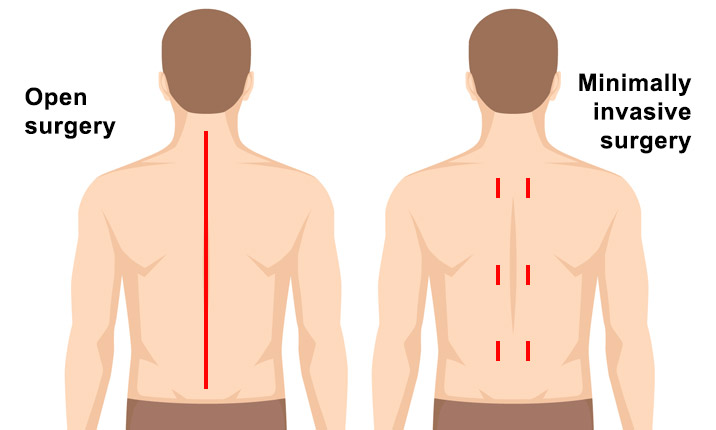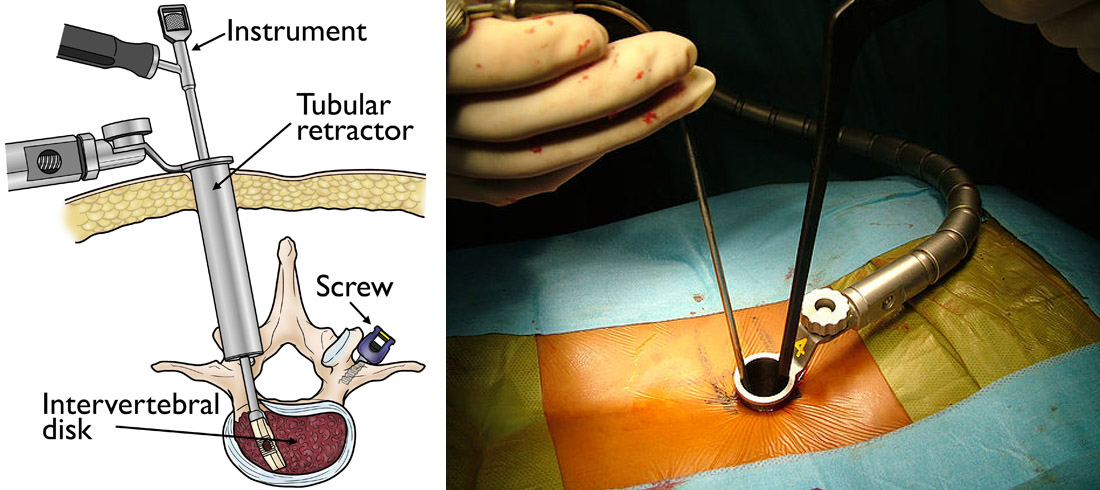
Eshealthtips.com – A less invasive spinal surgery is also known as MISS. The name suggests a low surgical invasion, as opposed to an open surgery, which traditionally required a five to six inch incision and a month in the hospital. This modern procedure can fix many problems without requiring invasive procedures, but it can be risky for patients who suffer from chronic pain. To learn more about MISS, read on.
Minimally Invasive Spine Surgery with Small Incision
In minimally invasive spine surgery, the surgeon will make an incision about an inch long. A tubular retractor will then be inserted into the incision to expose the spinal problem. The surgeon will then use tiny instruments, such as a camera, to make repairs. After completing the repairs, the incisions are closed using stitches or glue and a small bandage will be applied to the incision.
Depending on the condition, minimally invasive spinal surgery may be an appropriate option for your patient. If you are suffering from spinal nerve compression, herniated disc, or instability of the spine, you may be a good candidate. The surgeon will know which procedure is best for your condition and determine which method is most appropriate for your particular condition. If you are considering a minimally invasive surgery, contact a Manhattan orthopedic spine surgeon today to find out more about your options.

One of the most popular minimally invasive spine procedures is laminectomy, which repairs damaged or pinched nerves in the spinal column. Laminectomy requires removing a fragment of bone to relieve pressure on the nerve. This surgery is most often performed in patients with spinal stenosis, which restricts the movement of the spinal column. As a result, the patient can walk within a few hours of the procedure.
New Spine Surgery Using Advanced Imaging Techniques
MISS is the latest in spinal surgery technology. It involves making smaller incisions and using advanced imaging techniques to ensure that the surgical path is as minimal as possible. Unlike open procedures, it involves little or no pain, causing a much faster recovery time for patients. In addition, some people may experience a second procedure if their initial procedure does not work out. Minimally invasive spinal surgery offers relief to many people suffering from chronic pain.
A patient recovering from a minimally invasive spinal surgery will generally experience a shorter recovery time than an open surgery. Recovery time varies for every patient, but most patients can resume activities within six weeks. Patients should follow their physician’s rehab, exercise, and medication recommendations carefully to maximize the chances of a successful recovery. In some cases, patients can return to work within a week after the procedure. A limited activity is still recommended for the first few weeks, but patients should be able to resume normal activity at the six week mark.

A minimally invasive spinal procedure is often used in patients with traumatic injuries, advanced degenerative disc disease, or advanced spinal fusion. In addition to being minimally invasive, this procedure is safer and more effective than traditional spine procedures. There is minimal blood loss, resulting in minimally invasive surgery with minimal scarring. In addition to minimizing scarring, minimally invasive spine surgery preserves the integrity of intraspinal muscle attachments and the post-operative healing process.
Other Benefits of MIS Performed Outpatient Procedure
MIS is typically performed as an outpatient procedure, while open surgeries are generally performed in the hospital. However, open surgery is associated with higher risks. Often, open surgery is riskier and may require more IV pain medication, so the patient may want a minimally invasive procedure. However, the shorter recovery period and less painful recovery period can make the procedure more appealing to some patients. This procedure is becoming more common in recent years.

Before undergoing MISS, patients should discuss all medications they are currently taking. This may include blood thinners, which can delay the healing process. Additionally, smoking may delay healing, and a healthcare provider can help you stop. Finally, the morning of surgery, patients should avoid eating or drinking anything after midnight. They should also let their healthcare providers know of any recent changes in their health. The next day, they should resume their regular diet.
Reference: